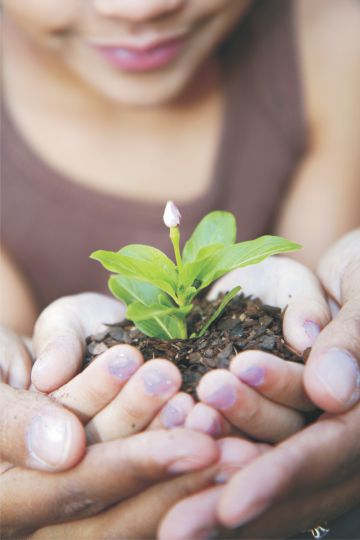

Garden Triage


This is the time of year when there’s so much to do in the garden that you don’t know where to start. Everything seems to be happening at once! Plants are coming up through the leaves that were left down last fall or blew in over the winter. There are fallen branches, twigs, pine cones etc. all over the place and the only plants that seem to be really happy are the weeds!
So how do you decide what needs to be done first? I use a method I call GARDEN TRIAGE. Just like in emergency rooms where they assign priorities to patients coming in, you can assign priorities to the things to be done in your garden.
The first step is finding out what needs to be done. Spend a little time walking around your garden with a notepad and make a list of all the things that you notice need to be done. The few minutes spent doing this will be well spent and help enable priorities to be set.
The second step is prioritizing what needs to be done. I use live or die criteria just like they do in hospital triage. Are there spring bulbs or plants in danger of being smothered by mulch or leaves? Have branches come down that need to be removed from beds? How about removing road salt and grit accumulation from lawn or gardens? Whatever you feel is the most important task for the wellbeing of your garden is what gets a number 1. Continue with numbers 2, 3, 4 etc. You may find there are 2 or 3 first or second priorities, that’s OK. Just tackle as much as you can handle each time you go out to do yard work.
So why bother with these steps when you just want to get out to the garden and get started? Actually, in the long run, it saves you time by making the time you do spend in the garden more efficient and effective. It also eliminates the possibility of starting in one section of the garden and maybe never making it to a different section where something else needs to be done first. We’ve all raked off mulch or leaves to find scrawny yellowing leaves trying to push their way up. (At least I sure have!) When I discover this sad situation, I always feel guilty for letting it happen and the plant may never have the vigor it would have if uncovered in a timely manner.
OK, so you’ve checked out your garden, prioritized your “to do” list and are ready to start. The following are a few suggestions that might be helpful in setting your priorities for common spring chores.
RAKING: The whole yard doesn’t have to be raked at once. The areas where spring bulbs are planted are the ones to rake off first. Then uncover wherever there are perennials that come up early. Instead of removing all leaf cover try leaving some leaves around emerging plants in case of a late frost. Basically, I leave as many leaves as I can as they decompose and feed the soil.
WEEDING: Spring is actually a great time to weed. If you get the perennial weeds while they’re small it’s much easier to remove them. At least get them before they drop seed and make more weeds!
In triage weeding remove the weeds that are encroaching or intermingled with perennials first. If the weed and perennial are growing together it’s best to dig up the whole clump, remove the weeds and replant the perennial. After the emergency weeds are removed you can attack the others. Annual weeds are also best removed as they appear (in an ideal world!).
TRANSPLANTING AND DIVIDING:
Perennials should be divided if their blooms have diminished, they have outgrown their spot, or their clump starts looking like a doughnut with a dead space in the middle (see picture).
Spring bloomers are best divided after they bloom, the rest can be divided in spring.
Plants you just want to relocate might be the second priority. Whichever case, wait until the soil is workable. Workable soil means not too wet or cold. Soil temps should be above 50 and the soil should not stay in a clump when squeezed in your hand.
If you have any gardening questions or concerns call for a consultation. Spring is the perfect time!
Lyn Chimera
Lessons From Nature
716-652-2432
lyn@lessonsfromnature.biz
A newspaper for Western New York's
Seniors - and proud of it!